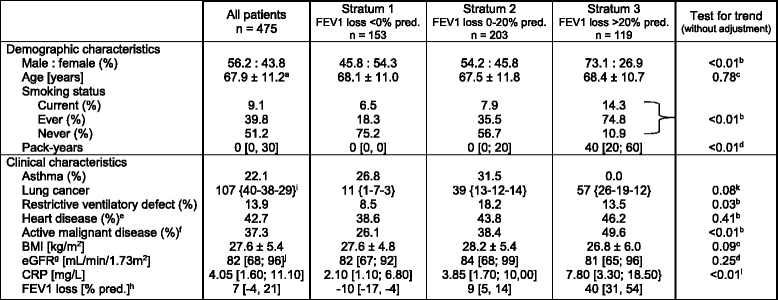
-
aMean value ± 1 standard deviation
-
bChi square test
-
cOne way analysis of variance
-
dKruskal-Wallis test
-
eHistory of coronary artery disease defined as either angiographically proven coronary artery disease or a hospital diagnosis of myocardial infarction, presence of atrial fibrillation, impaired left ventricular systolic function (ejection fraction <50%), significant valvular heart disease, pulmonary hypertension, or left ventricular hypertrophy. Comprehensive definitions of these conditions are in given in reference 3
-
fResidual tumor at the time of referral or time interval between cancer surgery/end of chemotherapy/radiotherapy and referral <3 months
-
gEstimated glomerular filtration rate
-
hFEV1 loss [% predicted] = 100% - FEV1 % predicted
-
iNumbers of patients with {squamous cell cancer – adenocarcinoma – other histologic subtype}
-
jMedian value, with interquartile range in brackets
-
kFisher’s exact test, distribution of histologic subtypes
-
lOne way analysis of variance for the log transformed values

